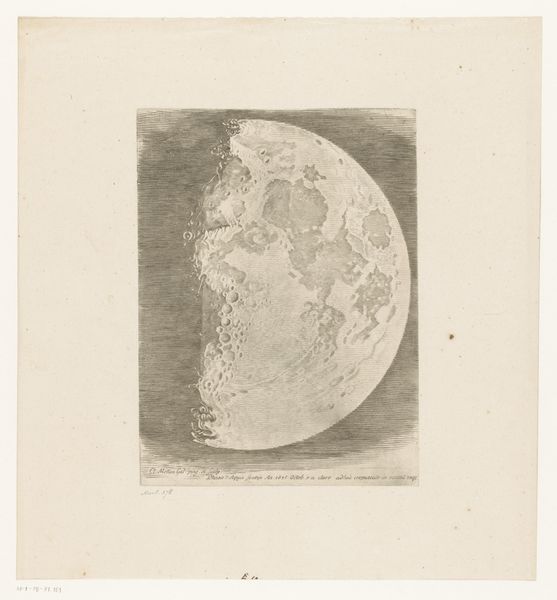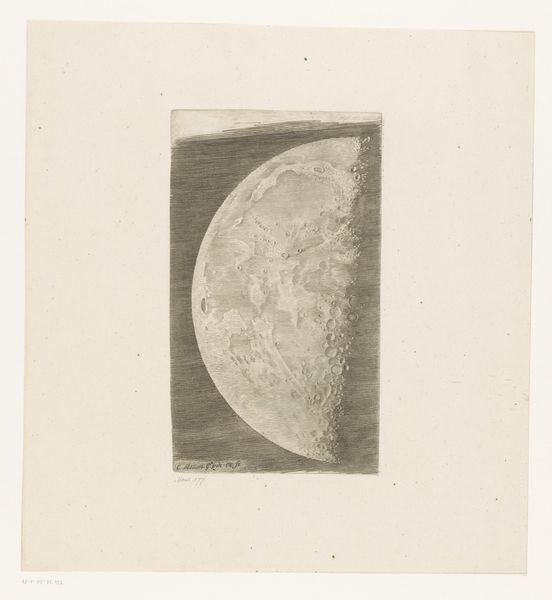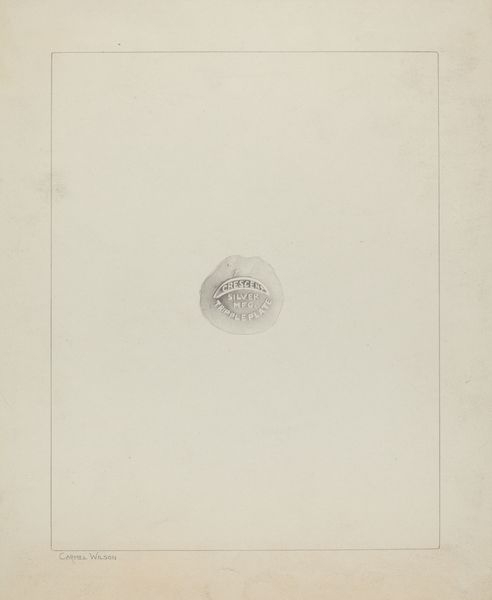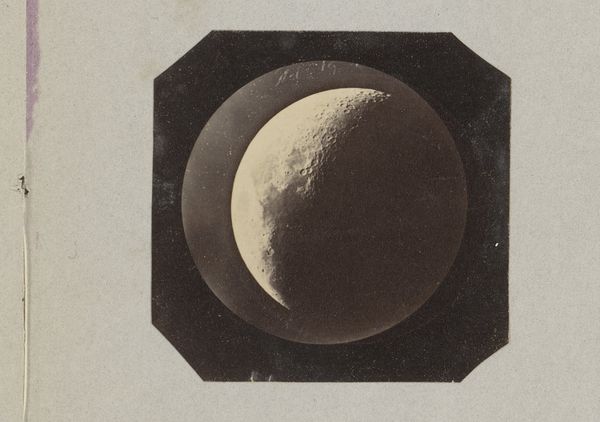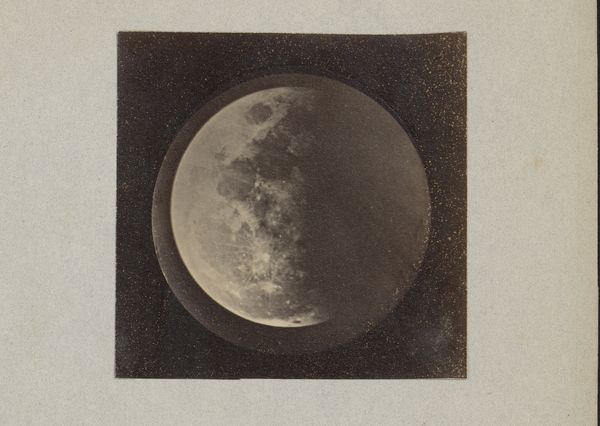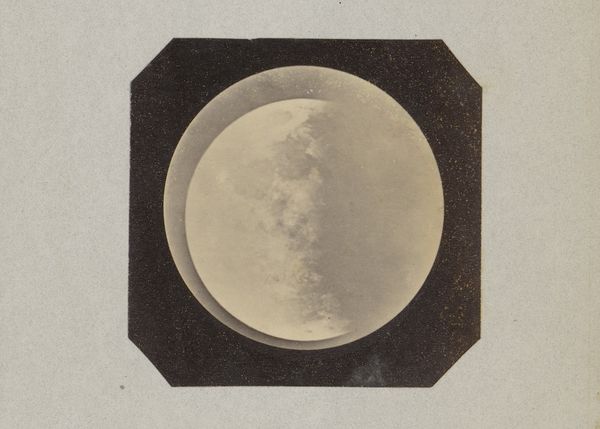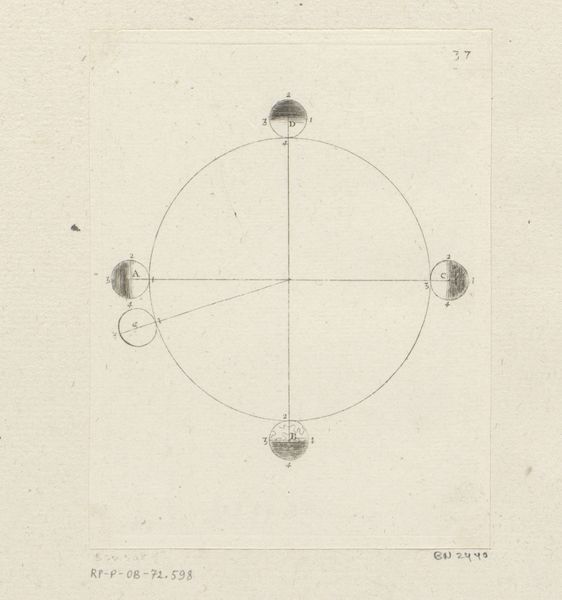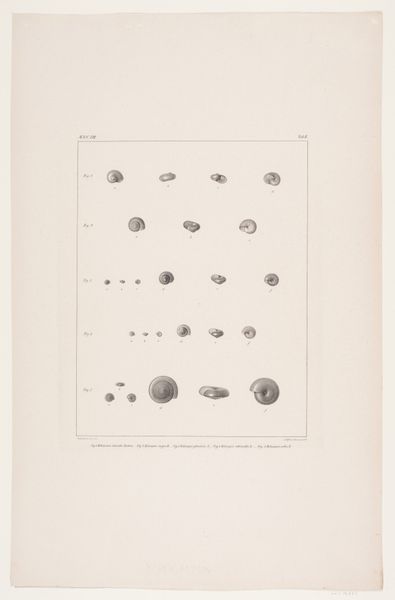
lithograph, print
#
16_19th-century
#
lithograph
# print
#
history-painting
#
academic-art
#
realism
Dimensions: height 249 mm, width 166 mm
Copyright: Rijks Museum: Open Domain
Art Historian: Welcome. Before us is an 1873 lithograph currently residing in the Rijksmuseum collection, entitled “Afmeting van de zon in vergelijking tot negen planeten," comparing the sizes of the sun and its planets. Curator: It's stark, isn't it? The sheer difference in scale hits you immediately. A rather dramatic visual lesson in cosmic hierarchies—emphasized, no doubt, by the printmaking process which relies on mass dissemination. Art Historian: Precisely! The sun, centrally placed and dominating the composition, has always symbolized power, life-giving force, and often, divine authority. Here, even divested of color, its visual weight speaks to those primal associations. The tiny planets huddle beneath it, reinforcing the familiar Ptolemaic notion, even though heliocentrism was established science by this time. Curator: Interesting to consider that the process of creating this print—lithography—would have involved a specialized stone, likely Bavarian limestone, carefully prepared. The image itself, initially drawn with a greasy crayon or ink, allows for those fine details depicting sunspots. It also means many copies could be created fairly cheaply for wide educational use. So, mass production served science, not the gods. Art Historian: An intriguing contrast. The black and white medium strips the celestial bodies of their individual myths, perhaps democratizing the heavens, bringing science to the masses. Yet the arrangement echoes those deeply ingrained symbolic relationships. Each planet, while small, is individually labelled; they maintain their separate identities within the sun’s vast influence, recalling classical mythological lineage that are projected unto these celestial beings. Curator: Consider, too, the very deliberate, ordered presentation, indicative of the 19th-century scientific ambition: a need to classify and understand, a systematic representation meant to bring clarity and order to the chaos of the cosmos. This clarity, ironically is printed with methods emerging through increasing mechanisation and with its own kind of social chaos in its making. Art Historian: The enduring power of visual language indeed transcends technological advancements. Even with new technologies, older symbolism perseveres within this quest for objective observation of nature, subtly reminding us of the timeless quest to comprehend our place in the universe. Curator: A point well-made. I leave with a sharper insight of this artwork, contemplating how both its materiality and symbolism communicate in the grand, perhaps inherently conflicting, project of explaining the cosmos.
Comments
No comments
Be the first to comment and join the conversation on the ultimate creative platform.
